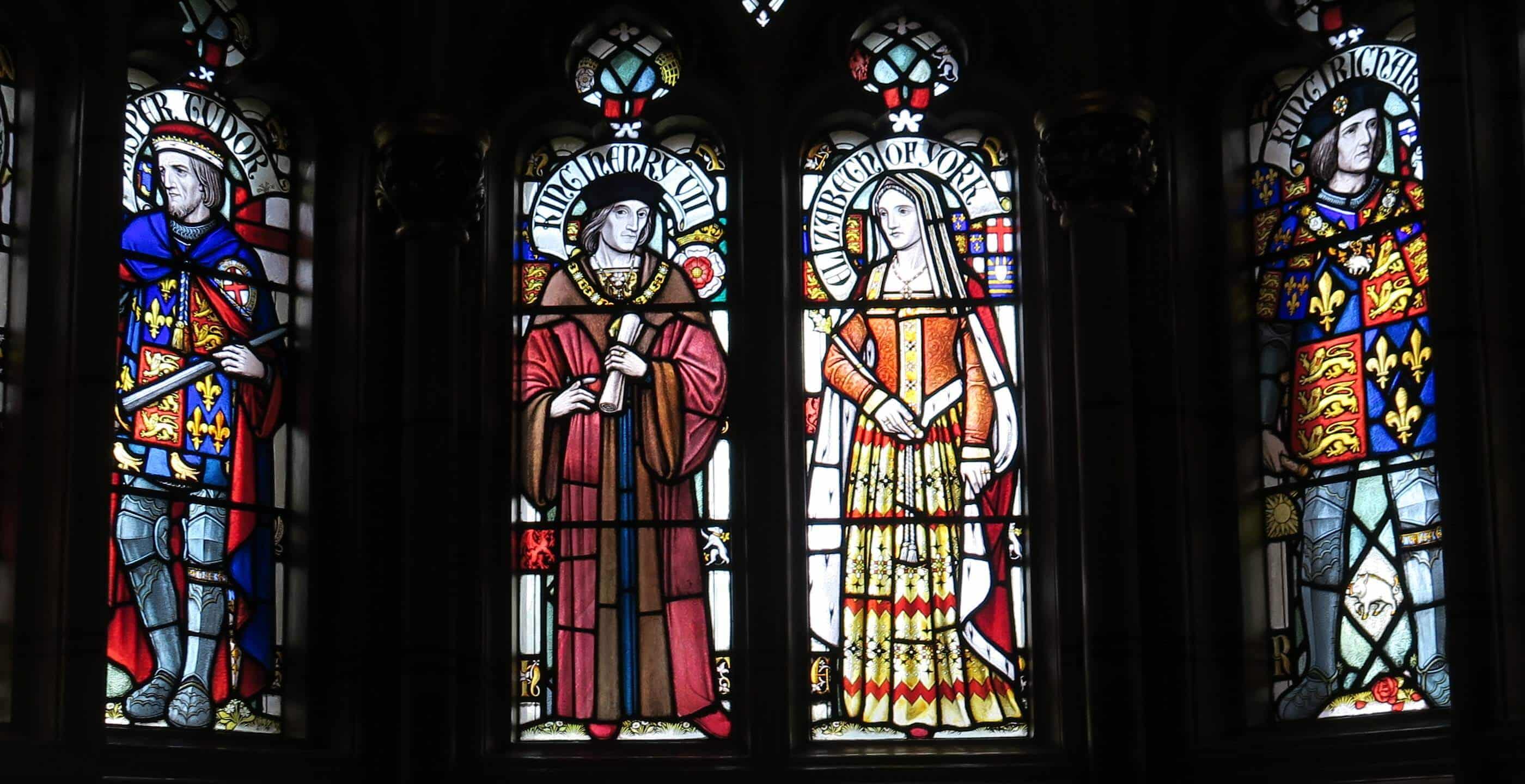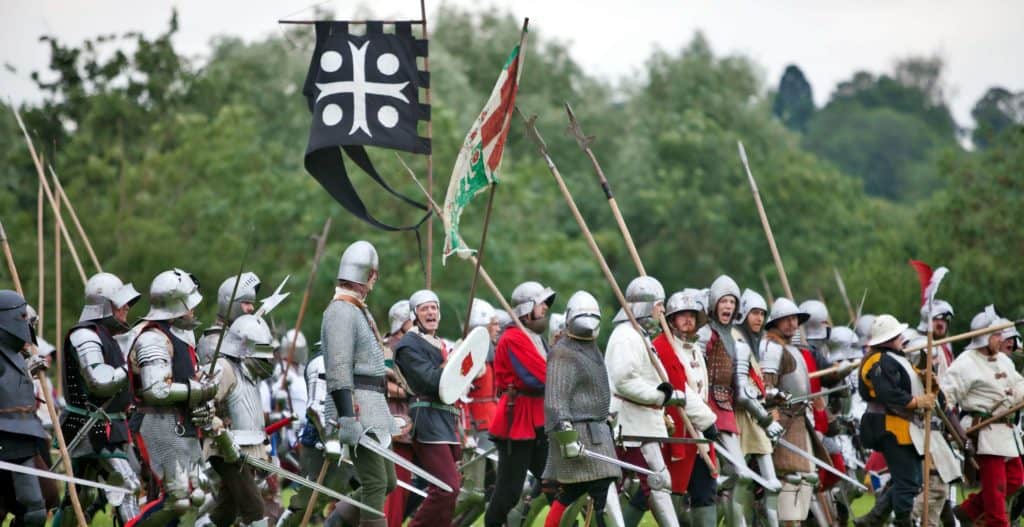Inside the Church of All Saints in the small Hertfordshire village of Kings Langley lays the tomb of a young woman whose bloodline flows through 600 years of English monarchy.
Anne de Mortimer was just 20 years old when she died in 1411.
The eldest daughter of Roger Mortimer, Earl of March, Anne was born into a powerful aristocratic family. Her family’s bloodline made her a direct descendant of the Plantagenet Kings Edward I and Henry III through her mother, and, more significantly, a descendant of King Edward III through her grandparents, the Earl of March and his wife Philippa, daughter of Edward III’s second son, Lionel Duke of Clarence. Thus her legacy gave her a double descent from the kings of England.

At the time of her birth in 1390, King Richard II was childless and his cousin, Roger Earl of March, Anne’s father, was the heir apparent. However in July 1398 Roger was killed at the Battle of Kells fighting against the Irish and his titles and claim to the crown passed to Anne’s younger brother, Edmund.
A year later in September 1399 Richard II was overthrown and killed by a rebel court faction led by Henry Bolingbroke, son of John of Gaunt, Duke of Lancaster. Bolingbroke proclaimed himself King Henry IV and forced Parliament to name his son, Henry (the future King Henry V) as heir to the throne.
The new King recognised the potential threat the Mortimers presented and had Anne’s brothers Edmund and six year old Roger imprisoned at Berkhamsted Castle.
Fortune did not favour Anne and her younger sister Eleanor. They remained with their mother and, according to the sources were poorly treated by the new King. When Anne’s mother died in 1405 the two Mortimer sisters were described as ‘destitute’, Anne’s only income being a £50 per annum grant from the Crown.
In May 1406, sixteen-year-old Anne married her cousin Richard of Conisburgh, grandson of King Edward III and the second son of Edmund of Langley, Duke of York and his wife Isabel, daughter of the King of Castile.
This was not as advantageous a marriage as it would seem, for although being of royal birth, Richard of Conisburgh was cash-poor. His contemporaries referred to him as ‘the poorest of all the earls’.

Their marriage took place hurriedly and in secret, without permission of family or the King and it would be two years before the Pope validated the marriage in the eyes of the Church.
Anne and Richard had two sons, Henry and Richard, and a daughter Isabel. Their first son Henry died in infancy and it was in giving birth to her youngest son Richard Plantagenet in September 1411 at Conisburgh Castle near Doncaster that Anne died aged just 20.
She was laid to rest in the Convent Chapel on the hill in Kings Langley alongside her husband’s father and mother, Edmund of Langley and Isabel of Castile. After the Dissolution of the Monasteries and with the chapel in serious disrepair, the bodies were reburied in the Church of All Saints, lower down in Kings Langley village.
In 1877 the tombs of Edmund of Langley and Isabella of Castile were exhumed. There were found to be three skeletons in all; the third was in a separate casket and was that of a younger woman under 30 with auburn hair, believed to be Anne Mortimer.
Descended from Edward III on both his father’s and mother’s side, Anne’s infant son Richard Plantagenet had a powerful claim on the throne of England, especially given the overthrow of Richard II and the tenuous claim of Henry IV. However Henry was adept at crushing rebellions and when he died in 1413, the crown passed unchallenged to his son Henry V.
Two years later, Anne’s husband (now Earl of Cambridge) conspired with other lords to overthrow Henry V in favour of Anne’s brother Edmund Mortimer. It was Edmund himself who passed on details of the plot to the king, as Henry made his final preparations to invade France. On 5th August 1415 Cambridge was beheaded for treason; six days later King Henry set sail for France and his destiny at Agincourt.
Although the Earl of Cambridge was executed for treason, Henry did not seize his lands and Anne’s son, the four-year-old Richard Plantagenet inherited both his father’s titles and estates.

In October 1415 at the Battle of Agincourt, Cambridge’s older brother the Duke of York was killed and Anne’s son Richard also became heir to the Dukedom of York. Together with his father’s lands and titles and the Mortimer inheritance, which passed to him on the death of his uncle the Earl of March in 1425, Richard Plantagenet became one of the richest and most powerful nobles in England.
When he grew to manhood, Richard took the title Duke of York and served Henry VI in France and Ireland. However his rivals around the king sought to exclude him from power and in so doing prompted the aristocratic feuds and violence that evolved into a power struggle. This culminated in Richard seeking the crown for himself and his descendants; thus was born the Wars of the Roses.
The Duke of York died in 1460 at Sandal Castle near Wakefield, ambushed by his aristocratic rivals and enemies. His son, the eighteen-year-old Edward Earl of March (Anne’s grandson) proclaimed himself king and defeated the forces of Henry VI at Towton in 1461 to establish a Yorkist dynasty on the throne.
Thus through her children and grandchildren, the young woman who lies in the church in Kings Langley played a pivotal part in British history.
She was the grandmother of two English kings (Edward IV and Richard III), great-grandmother of two others (Edward V and Henry VIII) and great-great-grandmother of four other monarchs (King Edward VI and the three Queens Mary I, Elizabeth 1 and Mary Queen of Scots). Indeed, our present Queen and all English royalty since the 16th century can trace their lineage back to her.
Written by Michael Long. I have over 30 years experience teaching History in schools and examiner History to A level. My specialist area is England in the 15th and 16th centuries. I am now a freelance writer and historian.





